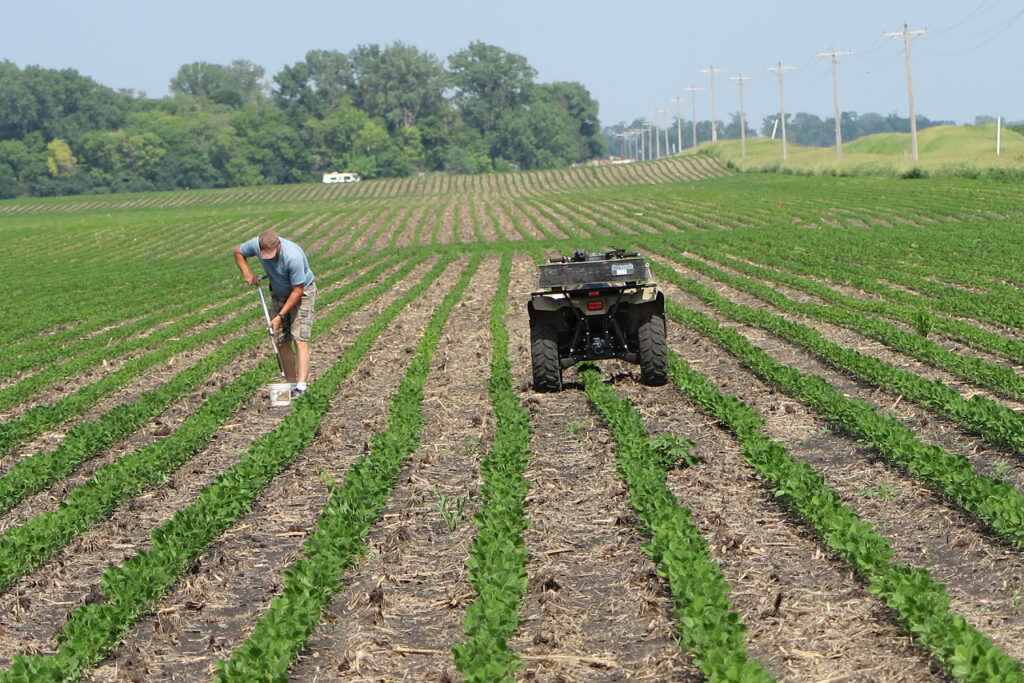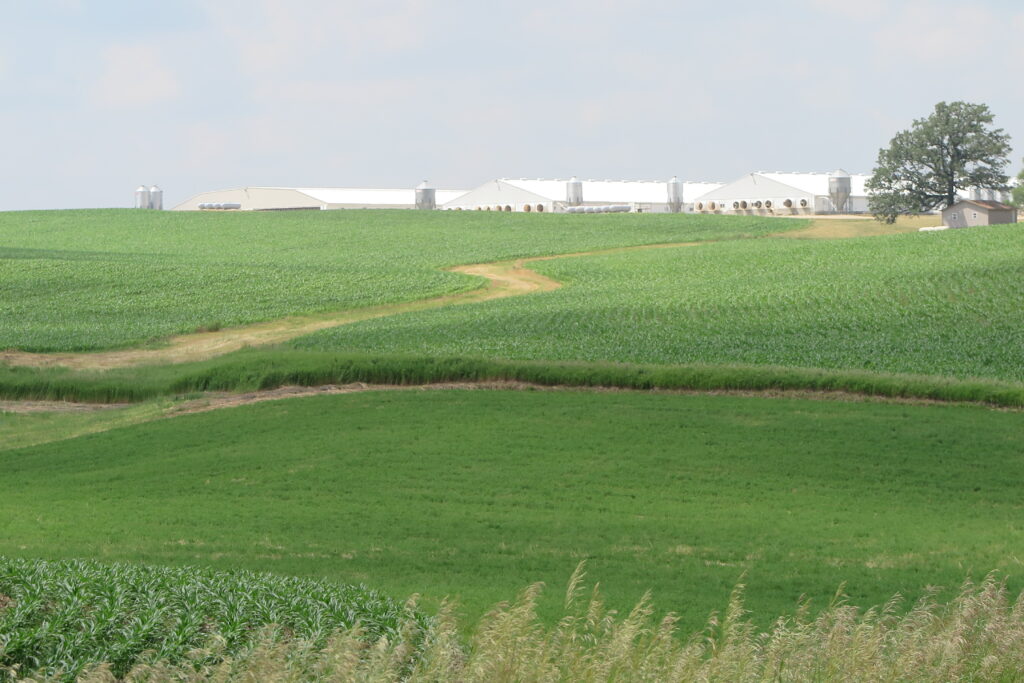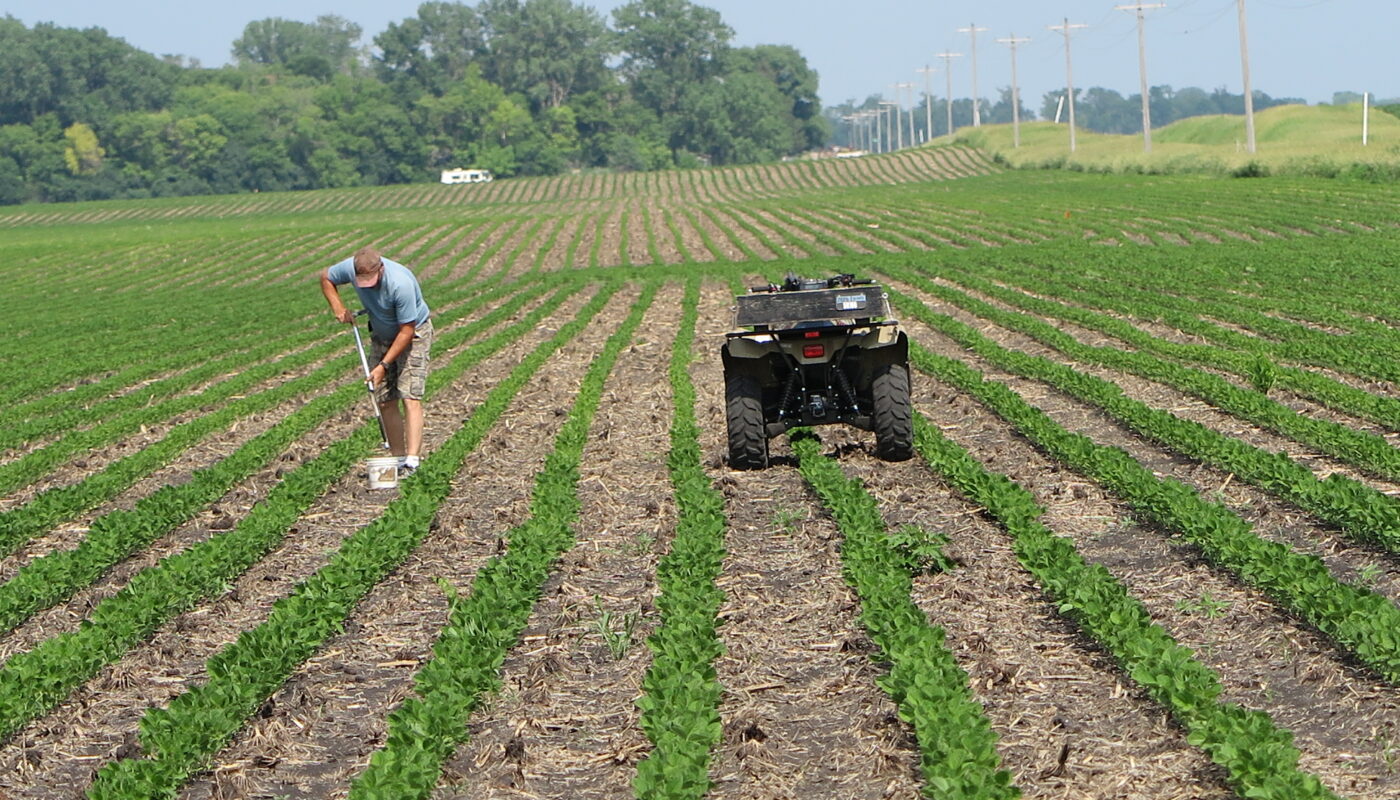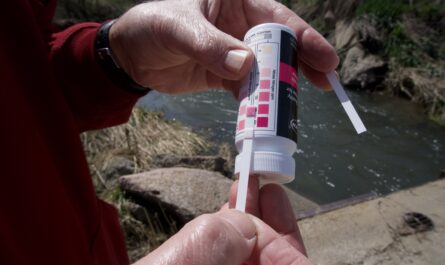
When directors of the public water utility in Des Moines, Iowa, went to court in 2015 to try to stop toxic farm nutrients from contaminating the city’s drinking water, they knew the federal lawsuit they filed would be seen as not just a desperate step to protect public health, but also a brazen act of defiance that would provoke a ferocious response from Iowa’s powerful farm and political leadership.
As they anticipated, a cohort of agricultural interests joined then-Gov. Terry Branstad in beating back the lawsuit, which Branstad declared an act of “war on rural Iowa.”
Des Moines Water Works alleged that drainage districts in three Iowa counties had polluted the Raccoon River with nitrates, forcing costly efforts by Des Moines to render the polluted water safe for drinking. A US District Court judge dismissed the case in 2017 after ruling that Iowa law immunizes drainage districts from damage claims.
It was the last time a government entity in Iowa or any other Corn Belt state made a focused attempt to reduce human exposure to suspected cancer-causing commercial fertilizers and a flood of livestock manure that routinely drains from farm fields into groundwater, streams, and rivers.
Until now.
Prompted by compelling research showing that cancer-related diseases and deaths are climbing as contamination from common agricultural chemicals and manure increases in key farm states, lawmakers and health officials in Iowa, Minnesota, and Nebraska are pursuing an array of new strategies aimed at reducing the risks to human health presented by the ongoing farm-related contamination.
A top concern for lawmakers and health professionals in the three states is reducing exposure to nitrates, which form when nitrogen from fertilizer and manure combine with oxygen. Babies can suffer severe health problems when consuming nitrates in drinking water, and a growing body of literature indicates potential associations that include an increased risk of cancer.
“It’s pretty obvious that in the areas where levels of nitrates and other agrichemicals in water are higher, you get more pediatric cancers and birth defects,” said Eleanor Rogan, chair of the Department of Environmental, Agricultural, and Occupational Health at the University of Nebraska Medical Center. “So that sort of tells you maybe you should do something about this and get the levels down.”

Iowa’s “Cancer Crisis”
Rogan is one of the leaders of Nebraska’s active epidemiological investigation into the state’s high rate of birth defects and pediatric cancers in areas where groundwater is contaminated with nitrates and atrazine, a weed killer.
State lawmakers last year approved $2.5 million to add a pediatric oncologist unit to the team of scientists and medical specialists at the Medical Center charged with identifying and controlling the sources of cancer in the state’s children. The new unit will conduct research on pediatric cancer, its treatment, and “identifying and controlling the sources of cancer in the state’s children,” she said. In 2022, the legislature approved grants available to households and communities to develop new sources of uncontaminated groundwater.
In Iowa, first-term Democratic state Rep. Austin Baeth, an internal medicine specialist from Des Moines, is leading a bipartisan effort in the state legislature to end what he calls “Iowa’s cancer crisis.” Working with Democrats and Republicans, Baeth says a number of bills are being drafted for legislative consideration later this year.
“One of the policies we are pursuing is to dedicate state resources to cancer epidemiology for us to start to try to find some of those linkages to figure out what are the key drivers of our cancer rate,” Baeth said. “I have been successful in finding champions on the Republican side who share my concern.”
A proposal that Baeth and colleagues are developing would fund an epidemiological research program to more precisely evaluate potential causes of cancer, identify the sources of exposure, the number of people sickened, and the places where excess cancers are developing.
The research findings would complement the Iowa Cancer Consortium project to better understand and make the case for limiting exposure to pesticides, commercial fertilizer, and animal manure used and generated by Iowa agriculture, among other environmental contaminants.
“I cannot say that we conclusively know that nitrates are the cause of our exceedingly high cancer in Iowa,” said Baeth. “But certainly nitrates and other potential toxins in the water are on the list of potential culprits. We know that high nitrate concentrations are linked to cancer.”
In Minnesota, state Rep. Rick Hansen, the Democratic chairman of the House Environment Committee, is introducing a bill this year that levies what he calls a “polluter pays” tax on commercial fertilizer to help families and communities develop clean sources of drinking water. Minnesota farms apply roughly 3 million tons of commercial fertilizer annually, according to state figures. A $1 per ton tax on fertilizer that now sells for $720 a ton would raise $3 million.

nitrate contamination fouling water in the state’s southeast counties. (Photo/Keith Schneider)
Minnesota’s Nitrate Contamination
Hansen’s proposal is a response to some of the nation’s worst nitrate contamination found in groundwater and drinking water wells in nine southeast Minnesota counties. In November the US Environmental Protection Agency ordered Minnesota to address “imminent and substantial endangerment to the health” of thousands of residents who were being exposed to high levels of nitrate contamination in their drinking water.
Since 2010 Minnesota has spent an average of $103 million annually to prevent water pollution from its sales-tax funded Clean Water, Land, and Legacy Fund. The fund modernized water treatment plants and preserved 17,000 acres along streams and rivers as unplanted natural areas. The fund also provided low interest loans to 1,100 of the state’s 67,400 farms to deploy voluntary best management practices to stem the flow of nitrates into water.
Yet contamination, according to the most recent state assessment, is getting worse. New approaches are needed, starting with a fertilizer tax, Hansen said.
“If we are in a public health crisis with high nitrates, you’ve got to find a good alternative water source for those people,” said Hansen, who represents the Twin Cities metropolitan area. “Who’s going to pay for it? I don’t believe that the general taxpayer should pay for it.”
Hansen’s proposal is supported by influential lawmakers in the state Senate, among them Sen. Matt Klein, the Democratic chairman of the Senate Commerce Committee, and an internist in Minneapolis. “The polluter pays for cleanup in the state of Minnesota,” he said. “If kids are drinking water that has been poisoned by nitrogen fertilizer, then the makers of nitrogen fertilizers need to help us fix that problem.”
“A Real Problem”
The steps taken by three of the nation’s largest farm states comes in response to long-term trends in agricultural production, water quality, and public health that converged over a decade ago and have intensified since.
The amount of nitrogen applied to corn, considered a necessity to boost yields, has increased 120 million pounds annually since 2000, according to the US Department of Agriculture (USDA). And the amount of nitrogen-rich and untreated liquid and solid manure from livestock being spread on farmland – most of it in the Midwest – grew to 1.4 billion tons by 2018, 300 million more tons than in 2007, USDA data shows.
Commercial nitrogen fertilizer and nitrogen-rich livestock and poultry manure are the leading sources of nitrate contamination that is increasing in the region’s surface and groundwater, according to state environment and agriculture agencies. According to many studies, as much as 70% of the nitrogen applied to farmland leaked off fields and drained as toxic nitrates into the region’s waters.
In Minnesota, for example, farmers are buying more commercial fertilizer. And the state’s immense population of hogs, cows, and poultry is producing nearly 50 million tons of liquid manure. The most recent state assessment found “nitrates are increasing in major rivers,” and “since 1992, there has been a general increase in the percent of new wells that have nitrate levels above the drinking water standard.”

contaminate water across the Corn Belt. This one is in southeast Minnesota. (Photo/Keith Schneider)
Evidence Builds For Cancer-Nitrate Link
The science tying nitrates to cancer also has been building over the last 20 years and continues to build. Medical researchers have been conducting epidemiology studies, looking at large groups of people and what they’re exposed to and their rates of cancers. The results, some scientists say, indicate that exposure to nitrates in drinking water poses a health threat at much lower concentrations than the 10 parts per million (ppm) federal drinking water standard.
In 2012 the US Centers for Disease Control and Prevention (CDC) reported that the incidence of cancer in Iowa, Nebraska, Minnesota and two other states in the Corn Belt – Ohio and Wisconsin — was increasing, even as the overall incidence of cancer in the US continued a decades-long decline. Just three states outside the Corn Belt experienced the same upward trend in incidence – Arkansas, Louisiana, and West Virginia.
Last year alarm bells finally started to ring in Iowa when the state Cancer Registry reported that its citizens were suffering with the second-highest incidence of cancer in the US. The latest CDC data also found that in five other Corn Belt states – Illinois, Minnesota, Nebraska, Ohio, and Wisconsin – the incidence of cancer ranked near the top.
Digging into the data even deeper — of the counties across the country with the highest incidence of cancer, according to the CDC, Palo Alto County in Iowa has the second highest incidence, and four others in Nebraska are in the top 25.
“I’m not sure I would characterize what’s happening as an emergency,” said Rogan of the University of Nebraska Medical Center. “But at some point as a society we’re going to have to say, ‘Well, do we want to expose everybody to all these agricultural chemicals?’ Everybody’s ending up being exposed to them and that’s a real problem.”
— Keith Schneider


